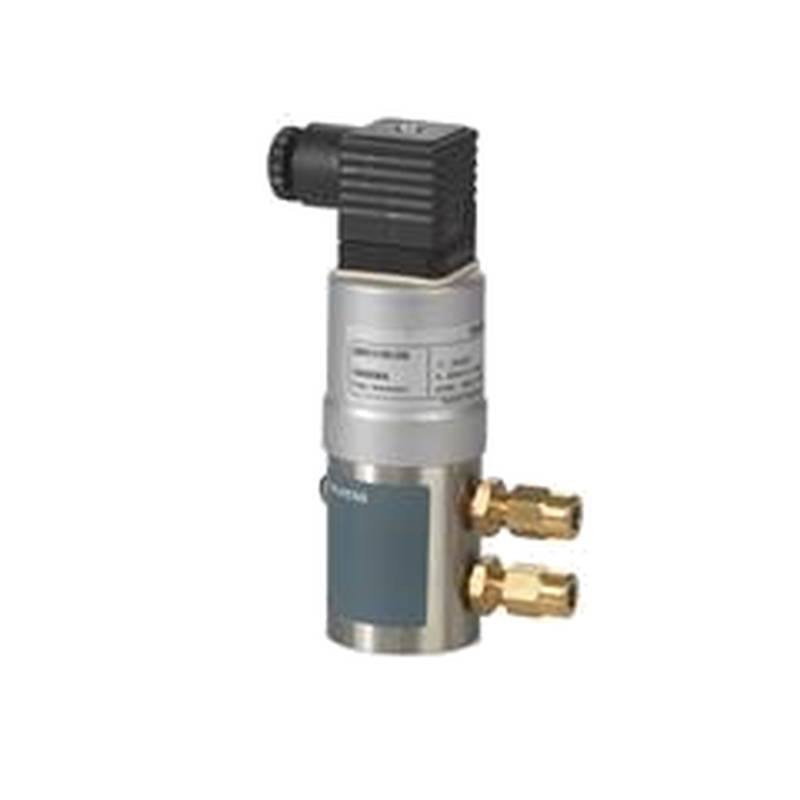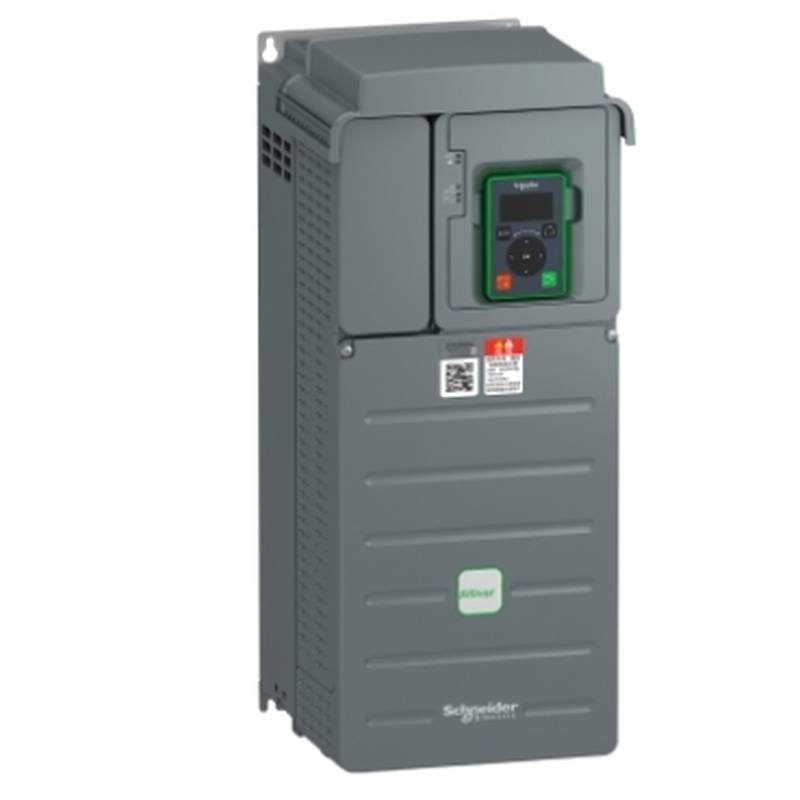
The Siemens S55720-S297, part of the QBE2003-P25 series, is a high-performance pressure sensor engineered for demanding industrial environments. It excels in measuring relative pressure for neutral and slightly aggressive liquids and gases. Key advantages include its robust construction, maintenance-free operation due to outstanding long-term stability, and measurement accuracy that remains unaffected by temperature fluctuations. The sensor offers a versatile pressure range of 0 to 25 bar and provides a standard 0-10 V analog output signal, facilitating seamless integration into various control systems. Its suitability for oil-containing media further broadens its application scope.
Product Specifications
| Specification | Value |
| :--------------------- | :----------------------------------------- |
| Product Number (MFN) | QBE2003-P25 |
| Stock Number | S55720-S297 |
| Measuring Range | 0–25 bar (0–2.5 MPa) |
| Output Signal | DC 0–10 V |
| Operating Voltage | AC 24 V, DC 12–33 V |
| Medium Temperature | -15–125 °C |
| Connecting Thread | G ½" |
| Electrical Connection | Plug-in connection (DIN EN175301-803A) |
| Sensing Element | Piezo |
| Time Constant | 0.002 s |
| Max. Permissible Pressure | 2.5 x scale end value (FS) |
| Max. Overpressure | 62.5 bar (2.5 x scale end value) |
| Mounting Position | Any |
| Dimensions (W x H x D) | 32 x 101 x 52 mm |
| Net Weight | 0.182 Kg |
| Warranty | 60 Months |
Core Features & Market Positioning
The Siemens S55720-S297, or QBE2003-P25, positions itself as a reliable and precise solution for industrial pressure monitoring. Its core strengths lie in its high-precision piezo-resistive measuring principle and robust design, ensuring dependable performance even in challenging conditions. Unlike sensors susceptible to temperature drift, this Siemens model maintains measurement integrity across varying temperatures, a critical factor in many industrial processes. The ease of installation, aided by its standard G ½" thread and DIN EN175301-803A plug connection, further enhances its market appeal for quick deployment and integration. Its suitability for a wide range of media, including those with oil content, distinguishes it from more specialized sensors.
Key Application Scenarios
This Siemens pressure sensor is ideally suited for a multitude of applications within HVAC systems, as well as hydraulic and pneumatic installations. Its capability to accurately measure pressure in liquid or gaseous media, including steam, makes it a versatile component in process control and automation. Common scenarios include monitoring pressures in:
HVAC Systems: Regulating airflow, water pressure, and steam systems for efficient climate control. Industrial Automation: Providing critical pressure data for pumps, compressors, and pipelines. Pneumatic and Hydraulic Systems: Ensuring optimal operation and safety in machinery and control circuits. Process Monitoring: Tracking pressure in tanks, vessels, and distribution networks.
Practical System Integration Guidance
Integrating the Siemens S55720-S297 into an existing system is straightforward due to its standard electrical and mechanical interfaces. The sensor features an external G ½" thread for mechanical connection, ensuring compatibility with a wide range of fittings and manifolds. For electrical connections, it utilizes a DIN EN175301-803A plug, a common industrial standard that simplifies wiring and allows for quick disconnection and reconnection. The operating voltage is flexible, accepting either AC 24 V or a DC range of 12–33 V, which accommodates various power supply configurations. The 0-10 V analog output signal can be directly interfaced with PLCs, data loggers, or other control devices that support this voltage input range. When installing, it is crucial to ensure a leak-proof fitting and to select an appropriate measurement point that avoids airlocks or sediment accumulation.
Operation and Risk Mitigation
Proper operation of the Siemens S55720-S297 ensures reliable performance and longevity. The sensor is designed for measuring relative pressure within its specified range of 0-25 bar. It is important to operate the sensor within its defined medium and ambient temperature limits, which range from -15 °C to 125 °C for the medium. Overpressure protection is robust, capable of handling up to 2.5 times the scale end value (62.5 bar) without damage. To mitigate risks associated with pressure surges, which can damage the sensor's diaphragm, installation should consider measures to dampen these effects. For instance, the use of an M5 screw, where applicable, can help reduce the impact of pressure spikes. It is also advisable to avoid measuring pressure directly from the top or bottom of pipes to prevent issues related to airlocks or dirt accumulation.
Scalability & Long-Term Value
The Siemens S55720-S297 (QBE2003-P25) offers long-term value through its inherent durability and Siemens' commitment to product longevity. While specific upgrade paths are not detailed for this exact model, Siemens' QBE series typically integrates well within broader Siemens industrial automation ecosystems. This allows for future expansion and integration with more advanced control systems, IIoT platforms, and digital monitoring solutions as operational needs evolve. The sensor's maintenance-free design and outstanding long-term stability contribute to reduced operational costs and a lower total cost of ownership over its extensive warranty period of 60 months.
Frequently Asked Questions
Q1: What is the primary application for the Siemens S55720-S297 pressure sensor?
The Siemens S55720-S297, also known as the QBE2003-P25, is primarily used for measuring relative pressure in neutral and slightly aggressive liquid and gaseous media.
It is particularly well-suited for applications within HVAC systems and hydraulic or pneumatic circuits, including those involving steam.
This sensor ensures precise pressure monitoring in industrial environments where reliability is paramount.
Q2: What is the pressure range and output signal of the Siemens S55720-S297?
This sensor can measure pressures from 0 to 25 bar.
It provides a linear analog output signal of DC 0 to 10 V, which is standard for many industrial control systems.
The output signal is unaffected by temperature changes, ensuring consistent readings.
Q3: Can the Siemens S55720-S297 be used with all types of liquids and gases?
The sensor is designed for neutral and slightly aggressive liquids and gases.
It is also specified for use with oil-containing media, expanding its application range.
However, it is not recommended for highly aggressive media that could damage the internal components.
Q4: What type of electrical connection does the Siemens S55720-S297 use?
The sensor features a plug-in connection conforming to the DIN EN175301-803A standard.
This common industrial connector allows for quick and secure electrical hookups.
It ensures reliable data transmission from the sensor to the control system.
Q5: What is the operating voltage for the Siemens S55720-S297?
The sensor operates on a supply voltage of AC 24 V or a DC range of 12–33 V.
This flexibility allows it to be integrated into various power supply configurations commonly found in industrial settings.
Ensuring the correct voltage is supplied is crucial for optimal performance and sensor longevity.
Q6: How is the Siemens S55720-S297 installed?
Installation involves a G ½" external thread for mechanical connection to the system.
The electrical connection is made via a standard DIN EN175301-803A plug.
Proper mounting position and ensuring a leak-proof seal are essential for accurate and reliable measurements.
Q7: What is the warranty period for the Siemens S55720-S297?
The Siemens S55720-S297 pressure sensor comes with a comprehensive 60-month warranty.
This extended warranty period underscores Siemens' confidence in the product's durability and reliability.
It provides users with peace of mind and protection against potential manufacturing defects.
Q8: Can this pressure sensor withstand overpressure?
Yes, the sensor has a maximum permissible pressure rating of 2.5 times its scale end value.
This means it can safely withstand pressures up to 62.5 bar without sustaining damage.
This high overload resistance ensures its integrity even in transient pressure spikes.
Q9: What is the significance of the sensor being "maintenance-free"?
The "maintenance-free" designation highlights the sensor's exceptional long-term stability.
This means it requires no regular recalibration or physical upkeep for continued accurate operation.
Reduced maintenance translates to lower operational costs and increased system uptime.
Q10: Does the Siemens S55720-S297 offer digital output or communication protocols?
The S55720-S297 model primarily provides an analog DC 0-10 V output signal.
It is designed for straightforward integration with systems that utilize analog signal processing.
For digital communication or advanced IIoT integration, alternative Siemens sensor models or additional interface modules may be required.

























